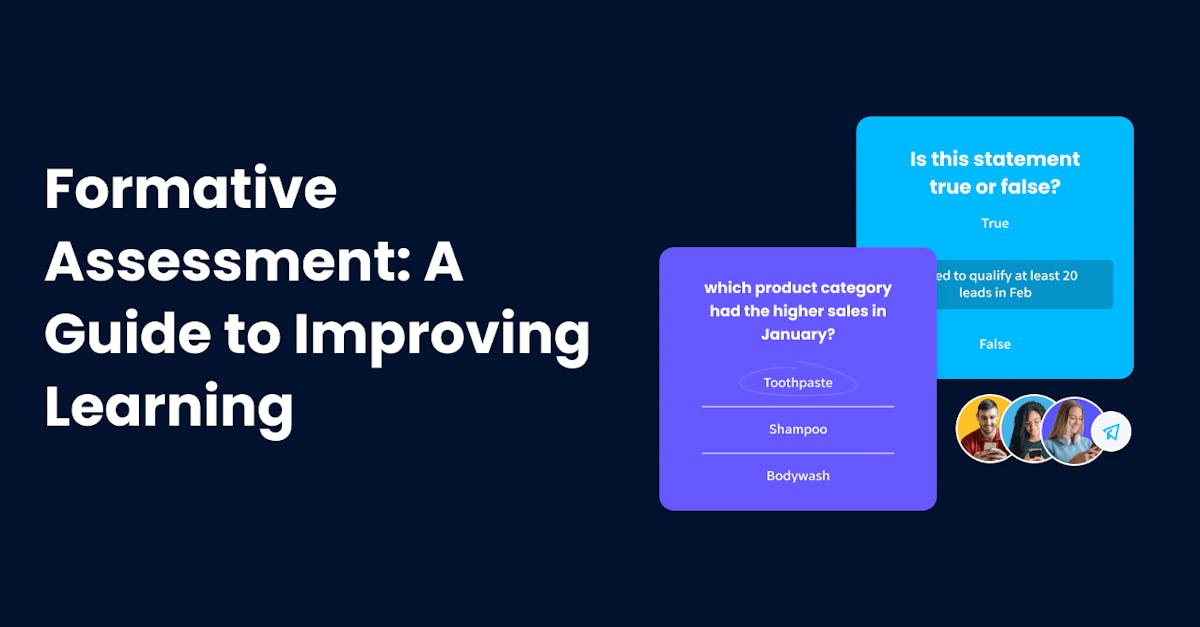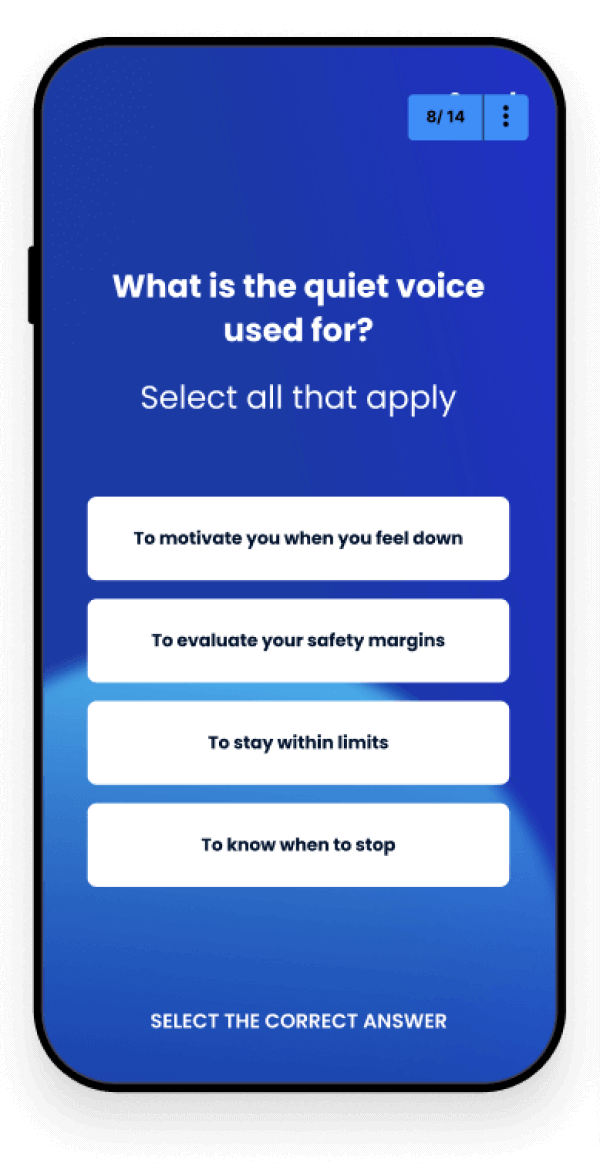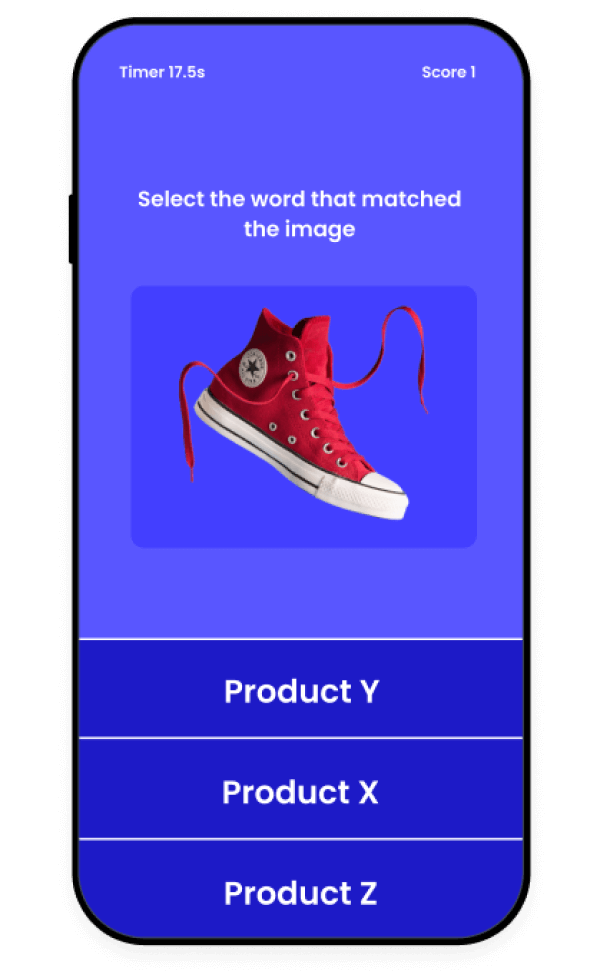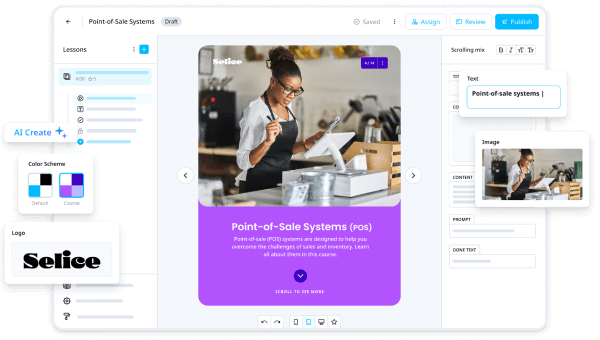Formative Assessment: A Guide to Improving Learning

Formative assessments are arguably an integral part of the learning process. Without them, your learners will have no way to get feedback and understand topics better at the same time. This article explores everything you need to know about formative assessment, its benefits, effective strategies for implementation, and its impact on a learner’s learning outcomes.
What are formative assessments?
Formative assessment refers to an ongoing, interactive, and diagnostic approach to evaluating someone’s learning. It’s a variety of formative evaluation techniques used by trainers to gather information about learners' learning progress and understanding during the training.

The primary purpose of formative assessments is to monitor learner progress, guide instructional decisions, and support learner learning and growth.
Unlike summative assessment, which measures learning at the end of a unit or course, formative assessment happens during the learning process. It gives real-time feedback to both learners and trainers and identifies each’s areas of strengths and improvements. This makes adjusting to how they learn and your trainer’s learning strategies a lot easier.
Formative assessments serve as a window into learners' learning journeys. It’s great for cutting down the time it takes to adjust and customize the training program and making sure you ROI on training faster.
What are summative assessments?
Summative assessments are evaluative measures conducted at the end of a learning period to determine someone’s overall achievement and proficiency in specific topics or courses.

Contrary to formative assessments, which are ongoing and deliver feedback to support learning, summative assessments focus on evaluating someone's knowledge repository and skills gained over a period of time.
The primary purpose of summative assessments is to evaluate things as a whole, not in parts. They’re used to make judgments about training performance, assign grades, rank learners among each other, or certify their achievements.
Formative Assessment vs. Summative Assessment
While both formative and summative assessments serve important purposes in evaluating trainee progress, they differ in many areas. Here’s how you can differentiate the two:
Key characteristics of formative assessment include:
- Timeliness: It offers immediate feedback to learners, letting them make adjustments and improvements during ongoing training
- Informative Feedback: It gives specific and actionable feedback that helps learners understand their strengths and areas for improvement. This feedback guides them toward achieving the desired learning outcomes.
- Flexibility: Formative assessment allows trainers to adjust their instructional strategies based on learners' needs and progress. It gives an opportunity for personalized instruction and targeted interventions.
- Engagement: Formative assessment actively involves learners in the learning process. It encourages self-reflection, metacognition, and active participation, promoting a deeper understanding of the subject matter.
Key characteristics of summative assessment include:
- Culminating Evaluation: Summative assessment aims to supply an overall evaluation of learner learning at a particular point in time. It assesses overall knowledge transfer and skills acquired throughout the learning period.
- Accountability: It’s often used for external accountability, such as evaluating schools, programs, or comparing learner performance across different institutions or districts.
- Standardization: Summative assessment follows predetermined criteria, rubrics, or standardized tests to guarantee consistency and fairness in evaluating learner performance.
- High-Stakes: Summative assessment often carries significant weight in determining grades, promotions, or college admissions. The results have long-term implications for learners' academic progression.
Differences between formative and summative assessments
To summarize the distinctions between formative and summative assessment:
- Timing: Formative assessment happens during the learning process, feeding ongoing feedback and guiding instruction, while summative assessment takes place at the end of a learning period, evaluating overall achievement.
- Purpose: Formative assessment aims to monitor learner progress, identify areas for improvement, and guide instruction, whereas summative assessment measures the final outcomes and evaluates overall learning achievement.
- Feedback: Formative assessment shares immediate and informative feedback to support learner learning and improvement, whereas summative assessment focuses more on final outcomes and may share limited insights.
- Flexibility: Formative assessment allows for flexibility in instructional strategies and interventions based on ongoing feedback, while summative assessment is more standardized and follows predetermined criteria.
- Stakes: Formative assessment has lower stakes and is primarily used for instructional purposes, while summative assessment often carries higher stakes and may have consequences for grading, ranking, or certificate.
10 Formative Assessment Examples
Now that you understand what formative assessment is and why it’s important, you may be thinking of implementing it into your training programs. Here are some effective ways you can do just that:

- Classroom Observations: Trainers can observe learners during class activities, discussions, or group work, paying attention to their engagement, participation, and understanding of the material. This allows trainers to gauge individual training progress and adjust instruction accordingly.
- Questioning Techniques: Asking open-ended questions, probing for understanding, and engaging learners in meaningful discussions are powerful formative assessment strategies. By listening to learners' responses, trainers can assess their comprehension and critical thinking skills, and identify any misconceptions.
- Exit Tickets: Exit tickets are short quizzes or prompts given at the end of a lesson to assess learners' comprehension and identify areas that may need further clarification. learners present brief written responses or select multiple-choice answers, allowing trainers to quickly assess their understanding.
- Think-Pair-Share: This strategy involves learners thinking individually about a question or problem, discussing their thoughts with a partner, and then sharing their ideas with the class. It encourages active engagement, and collaboration, and lets the trainer assess learners' understanding through their discussions.
- Quick Checks: Quick checks are brief, focused assessments that can be conducted orally or in written form. They aim to gauge learners' understanding of specific concepts or skills covered in a lesson. Quick checks share immediate feedback with both learners and trainers.
- Graphic Organizers: Using graphic organizers, such as concept maps, Venn diagrams, or KWL charts, helps learners visually organize their thoughts and demonstrate their understanding of relationships between concepts. trainers can assess learners' comprehension based on the completeness and accuracy of their graphic organizers.
- Peer and Self-Assessment: Peer and self-assessment promote active learning and metacognition. Learners assess their own work or share insights and types of knowledge with their peers. This encourages reflection and self-regulation and helps learners develop a deeper understanding of the assessment criteria.
- Observational Checklists and Rubrics: Trainers can use checklists or rubrics to observe and assess learners' performance during class activities, presentations, or projects. These tools detail structured criteria for examples of formative evaluation, giving consistency and clarity in assessment.
- Learner Reflections: Opening up opportunities for learners to reflect on their learning journey is an effective formative assessment technique. Learners can write reflections, create learning portfolios, or engage in discussions where they express their understanding, identify areas for growth, and set goals for improvement.
- Digital Tools and Online Quizzes: Taking advantage of technology, trainers can implement digital tools and platforms that facilitate formative assessment. Online quizzes, interactive activities, and learning management systems allow for immediate feedback and data analysis to inform instructional decisions.
How to Create Formative Assessments with EdApp
EdApp is an innovative and user-friendly learning management system (LMS) that offers a range of features to support effective formative assessments.

With its intuitive interface and comprehensive tools, EdApp empowers trainers and leaders to create engaging assessments that enhance learners' learning and deliver valuable insights into their progress. Here’s how you can start creating formative assessments using EdApp.
Step 1: Sign in to EdApp
Begin by signing in to your EdApp account. If you don't have an account, you can create one by following the registration process on the EdApp website.
Step 2: Access the Course Creator
Once you're logged in, navigate to the Course Creator feature in EdApp. This is where you can build and design your formative assessments. EdApp also has a great feature called AI Create, where you don’t have to do any heavy lifting on test creation. You can just let AI make one for you.
Step 3: Select Assessment Type
In the Course Creator, choose the assessment type that best suits your needs. EdApp offers various assessment options, including multiple-choice questions, open-ended questions, true or false, and more.
Step 4: Add Questions
Start adding questions to your assessment. For multiple-choice questions, add the question stem and the available answer options. For open-ended questions, allow learners to type their responses.
Step 5: Set Feedback and Correct Answers
Customize the feedback for each question. You can give specific opinions for correct and incorrect answers to guide learners' understanding and learning process. Additionally, specify the correct answer(s) for multiple-choice questions.
Step 6: Determine Scoring and Grading
Decide on the scoring system for your formative assessment. EdApp allows you to assign points to each question and set a total score for the assessment. You can also specify whether partial credit should be awarded for partially correct answers.
Step 7: Customize Assessment Settings
Explore the various settings available in EdApp to further customize your formative assessment. You can adjust the time limit for completing the assessment, determine whether learners can retake the assessment, and choose the feedback options for immediate or delayed feedback.
Step 8: Preview and Test
Before finalizing your formative assessment, take advantage of EdApp's preview feature to review how the assessment will appear to learners. This allows you to check for any formatting issues, guarantee clarity of questions, and validate the functionality of the assessment.
Step 9: Publish and Assign
Once you're satisfied with the formative assessment, publish it within EdApp and assign it to your desired group of learners. EdApp lets you easily distribute assessments to specific learners or entire classes.
Step 10: Track and Analyze Results
After learners have completed the formative assessment, EdApp has comprehensive analytics and reporting features. You can view individual learner results, identify areas of strength and weakness, and gain valuable insights into overall class performance.
EdApp's user-friendly interface, versatile assessment options, and robust analytics make it an excellent platform for creating and implementing formative assessments. By using EdApp's features, educators can effectively evaluate learner progress, give timely feedback, and drive continuous improvement in their teaching practices.
EdApp is a mobile learning management system designed for today’s digital habits, delivering more engaging and effective micro-learning directly to learners anytime and anywhere.
Sign up for this formative assessment creator tool today.
Author
Stephanie Escuadro
Stephanie is an eLearning content writer for EdApp, a microlearning solution designed for today's digital habits. She creates content about cutting-edge learning technologies and resources to help companies deliver great training experiences. When not absorbed in writing, she spends her time taking care of her dog and binge-watching.
